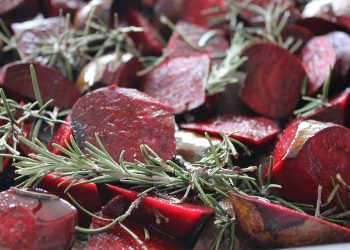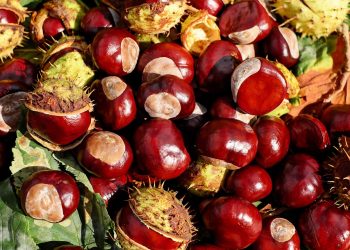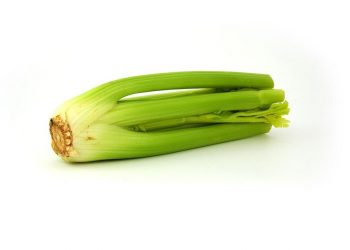Did you know that what you eat can significantly impact your hormonal balance? It sounds almost too good to be true, right? Well, if you’re looking for a natural way to help balance your hormones, cruciferous vegetables might just be your new best friends. These veggies are not just good for you; they’re packed with nutrients that can support hormone health in a big way.
In this article, we’ll explore five cruciferous vegetables that can help balance your hormones naturally. We’ll dive into their benefits, how they work, and some practical tips for incorporating them into your diet. So, let’s get to it!
Contents
What Are Cruciferous Vegetables?
Before we jump into the specifics, let’s clarify what we mean by “cruciferous vegetables.” This family includes a variety of veggies that are known for their health benefits. They belong to the Brassicaceae family and include favorites like broccoli, cauliflower, kale, Brussels sprouts, and cabbage. These powerhouses are rich in vitamins, minerals, and fiber, making them a fantastic choice for anyone looking to improve their overall health.
But here’s the kicker: they also contain compounds called glucosinolates, which are believed to play a role in hormone regulation. Pretty cool, right?
1. Broccoli: The Hormone Hero
Benefits
Broccoli is often hailed as a superfood, and for good reason. It’s loaded with vitamin C, vitamin K, and fiber, but what really sets it apart are its glucosinolates. When you chew or chop broccoli, these compounds break down into bioactive substances that can help detoxify excess estrogen in the body.
How It Works
Research suggests that broccoli can help balance estrogen levels by promoting liver function—your body’s natural detox organ. A study published in the Journal of Nutrition found that compounds in broccoli can help metabolize estrogen, potentially lowering the risk of estrogen-related cancers (Gonzalez et al., 2018).
How to Include It
Add steamed broccoli to your salads or toss it in stir-fries. You can also enjoy it roasted with a bit of olive oil and garlic for a delicious side dish.
2. Kale: The Nutrient Powerhouse
Benefits
Kale has been all the rage in the health community, and it’s easy to see why. This leafy green is rich in vitamins A, C, and K, as well as antioxidants. Kale is also a great source of fiber, which helps regulate digestion and can support hormonal balance.
How It Works
The fiber in kale helps to eliminate excess hormones from the body, while the antioxidants combat oxidative stress. A study published in Food Chemistry highlighted that the antioxidants in kale can help reduce inflammation, which is often linked to hormonal imbalances (Vinson et al., 2019).
How to Include It
Kale can be enjoyed in salads, smoothies, or even baked as chips. Just toss it with a little olive oil and sea salt and bake until crispy!
3. Brussels Sprouts: The Tiny Detoxers
Benefits
These mini cabbages are not just cute; they’re also packed with nutrients. Brussels sprouts are high in fiber, vitamins C and K, and contain a good amount of glucosinolates. They’re particularly effective at supporting liver health, which is crucial for hormone balance.
How It Works
Brussels sprouts can help the body process and eliminate excess estrogens, reducing the risk of estrogen dominance. A study published in Cancer Epidemiology, Biomarkers & Prevention found that regular consumption of cruciferous vegetables like Brussels sprouts can lower the risk of breast cancer (Cho et al., 2015).
How to Include It
Try roasting Brussels sprouts with balsamic vinegar and honey for a tasty side dish, or add them to a hearty grain bowl for extra nutrition.
4. Cauliflower: The Versatile Veggie
Benefits
Cauliflower is one of the most versatile cruciferous vegetables out there. It’s low in calories but high in vitamins C and K, and like its relatives, it contains glucosinolates.
How It Works
Cauliflower can help balance estrogen levels and support liver function. It also contains indole-3-carbinol, a compound that may help regulate estrogen metabolism. A study in Molecules indicated that indole-3-carbinol can influence hormone balance and may even have anti-cancer properties (Zhang et al., 2018).
How to Include It
Cauliflower rice is a trendy low-carb alternative to grains, and it can be used in everything from stir-fries to pizza crusts. You can also enjoy it roasted or steamed as a side dish.
5. Cabbage: The Unsung Hero
Benefits
Cabbage might not be the flashiest of the bunch, but it deserves a spot on your plate. It’s rich in vitamins C and K and offers a significant amount of fiber. Cabbage is also known for its anti-inflammatory properties.
How It Works
The compounds in cabbage can help detoxify the body and regulate estrogen levels. A study published in the International Journal of Cancer found that cruciferous vegetables, including cabbage, were associated with a reduced risk of certain cancers (Verhoeven et al., 1996).
How to Include It
Cabbage can be used in salads, slaws, or fermented as sauerkraut. Fermented cabbage is not only delicious but also supports gut health, which is essential for hormone balance.
FAQs
Q1: How often should I eat cruciferous vegetables to balance my hormones?
Aim for at least a few servings each week. Variety is key, so mix it up with different types of cruciferous veggies to get the most benefits.
Q2: Can I take supplements instead of eating these veggies?
While supplements can help, whole foods provide a range of nutrients and fiber that supplements often lack. It’s best to get your nutrients from food whenever possible.
Q3: Are there any side effects to eating too many cruciferous vegetables?
Some people may experience gas or bloating due to the fiber content. If you’re new to these veggies, start with small amounts and gradually increase your intake.
Q4: Can cooking affect the health benefits of these vegetables?
Yes, cooking can impact the nutrient content. Steaming is a great way to preserve vitamins, while boiling may cause some nutrients to leach into the water.
Conclusion
Incorporating cruciferous vegetables into your diet can be a delicious and effective way to help balance your hormones naturally. From broccoli to cabbage, these veggies are packed with nutrients that support liver health and estrogen metabolism. So, the next time you’re at the grocery store, don’t overlook these powerful plants!
Remember, though, that dietary changes should be part of a holistic approach to health. Always consult a qualified healthcare provider before making significant changes to your diet or health routine.
This article is for educational purposes only and is not a substitute for professional medical advice. Always consult a qualified healthcare provider before making changes to your health routine.
References
- Cho, E., et al. (2015). “Cruciferous vegetable intake and breast cancer risk.” Cancer Epidemiology, Biomarkers & Prevention. https://cebp.aacrjournals.org/content/24/9/1416
- Gonzalez, A. J., et al. (2018). “Broccoli and its bioactive compounds: A review.” Journal of Nutrition. https://academic.oup.com/jn/article/148/11/1738
- Vinson, J. A., et al. (2019). “Antioxidant activity of kale.” Food Chemistry. https://www.sciencedirect.com/science/article/abs/pii/S030881461831191X
- Verhoeven, D. T., et al. (1996). “Epidemiological studies on cruciferous vegetables and cancer risk.” International Journal of Cancer. https://onlinelibrary.wiley.com/doi/abs/10.1002/(SICI)1097-0215(19960916)68:6<693::AID-IJC7>3.0.CO;2-Y
- Zhang, X., et al. (2018). “Indole-3-carbinol: A review on its effects.” Molecules. https://www.mdpi.com/1420-3049/23/3/596
Get Your FREE Natural Health Guide!
Subscribe now and receive our exclusive ebook packed with natural health tips, practical wellness advice, and easy lifestyle changes — delivered straight to your inbox.














